How to attract native birds to your garden.
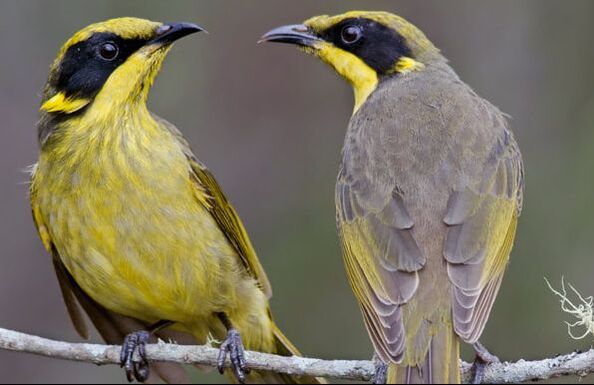
Birds are essential to the ecosystem and there are more than 700 native species to welcome into your garden.
It will probably come as no surprise that native birds are attracted to Australian native flowers but this doesn't mean this an exclusive attraction. The more nectar the better, in their eyes, so opt for plants that produce nectar-filled flowers and you're pretty much guaranteed a visit from our native feathered friends.
Here, Horticulturalist Helen Young lists the top five budding attractors.
It will probably come as no surprise that native birds are attracted to Australian native flowers but this doesn't mean this an exclusive attraction. The more nectar the better, in their eyes, so opt for plants that produce nectar-filled flowers and you're pretty much guaranteed a visit from our native feathered friends.
Here, Horticulturalist Helen Young lists the top five budding attractors.
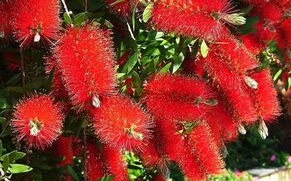
BOTTLEBRUSHES
Our native Callistemon species have showy, nectar-filled flowers that attract lorikeets, rosellas and honeyeaters, and many insects that feed smaller birds. The seeds provide a bounty for rosellas and other parrots. 'Kings Park Special', 'Endeavour' and 'Harkness' are good small trees with red blooms, but there are pink, mauve, yellow and white varieties. Compact shrubs include 'Captain Cook', 'Firebrand' and 'Matthew Flinders'. Bottlebrushes can tolerate wetter soils than most natives.
Our native Callistemon species have showy, nectar-filled flowers that attract lorikeets, rosellas and honeyeaters, and many insects that feed smaller birds. The seeds provide a bounty for rosellas and other parrots. 'Kings Park Special', 'Endeavour' and 'Harkness' are good small trees with red blooms, but there are pink, mauve, yellow and white varieties. Compact shrubs include 'Captain Cook', 'Firebrand' and 'Matthew Flinders'. Bottlebrushes can tolerate wetter soils than most natives.
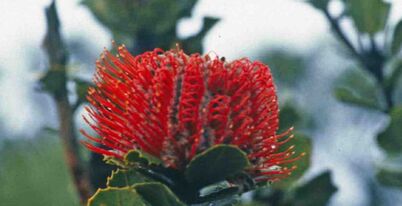
BANKSIAS
Banksias offer shelter as well as abundant nectar on their flower-packed spikes, often in the important autumn winter period. They also attract insects and provide seeds for larger birds such as cockatoos. Some of the most beautiful species, such as B. grandis and B. pilostylis are native to WA and not as well suited to the eastern states, where good choices are 'Giant Candles', coastal banksia (B. integrifolia) and heath banksia (B. ericifolia).
Banksias offer shelter as well as abundant nectar on their flower-packed spikes, often in the important autumn winter period. They also attract insects and provide seeds for larger birds such as cockatoos. Some of the most beautiful species, such as B. grandis and B. pilostylis are native to WA and not as well suited to the eastern states, where good choices are 'Giant Candles', coastal banksia (B. integrifolia) and heath banksia (B. ericifolia).
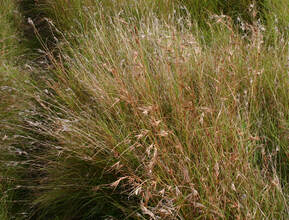
GRASSES
Little birds such as finches and wrens hunt out common garden pests in our gardens but usually stay low to the ground, flitting from plant to plant. They love tussocky grasses for their seeds and for shelter. Try native grasses such as kangaroo grass (Themeda triandra), tussock grass (Poa labillardieri), meadow rice grass (Microlaena stipoides) and wallaby grass (Austrodanthonia spp). Dot clumps through the garden near ground-hugging shrubs so little birds have a continuous safe zone to forage.
Little birds such as finches and wrens hunt out common garden pests in our gardens but usually stay low to the ground, flitting from plant to plant. They love tussocky grasses for their seeds and for shelter. Try native grasses such as kangaroo grass (Themeda triandra), tussock grass (Poa labillardieri), meadow rice grass (Microlaena stipoides) and wallaby grass (Austrodanthonia spp). Dot clumps through the garden near ground-hugging shrubs so little birds have a continuous safe zone to forage.
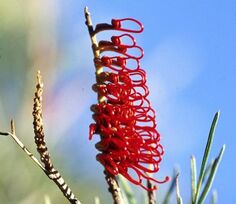
GREVILLEAS
Grevilleas range from groundcovers to tall trees, but most are small to medium shrubs. The large-flowered hybrids bloom all year, attracting large honeyeaters that are fun to watch but can chase away small birds. Top performers include 'Superb', 'Peaches and Cream', 'Moonlight' and 'Honey Gem', but there are dozens in all shades of yellow, orange, pink, cream and red. Compact shrubs with smaller flowers are better for small birds. Try G. rosmarinifolia 'Firecracker', 'Pink Midget' and 'Lady O'.
Grevilleas range from groundcovers to tall trees, but most are small to medium shrubs. The large-flowered hybrids bloom all year, attracting large honeyeaters that are fun to watch but can chase away small birds. Top performers include 'Superb', 'Peaches and Cream', 'Moonlight' and 'Honey Gem', but there are dozens in all shades of yellow, orange, pink, cream and red. Compact shrubs with smaller flowers are better for small birds. Try G. rosmarinifolia 'Firecracker', 'Pink Midget' and 'Lady O'.
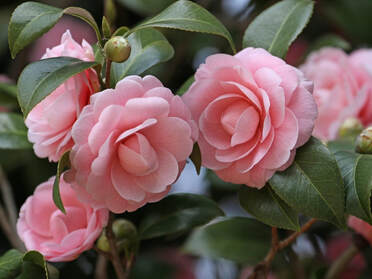
NON-NATIVE PLANTS
CAMELLIAS
Camellias are just some of many non-native plants that reliably bring in the birds. Sasanquas flower from late summer to autumn, followed by japonicas, which bloom from winter into spring, meaning an abundance of nectar for three-quarters of the year. The dense foliage also offers shelter and safety. Camellias are valuable because they can grow in shade; most natives need a sunnier spot to flower well.
Tip: Native birds are especially attracted to red and yellow flowers. Plant a range of plants that flower at different times of the year.
CAMELLIAS
Camellias are just some of many non-native plants that reliably bring in the birds. Sasanquas flower from late summer to autumn, followed by japonicas, which bloom from winter into spring, meaning an abundance of nectar for three-quarters of the year. The dense foliage also offers shelter and safety. Camellias are valuable because they can grow in shade; most natives need a sunnier spot to flower well.
Tip: Native birds are especially attracted to red and yellow flowers. Plant a range of plants that flower at different times of the year.
BIRD-ATTRACTING BASICS
- Shelter: Aim for complex layers of plants with differing heights. Grow low bushes in groups to provide a patch of dense understorey for small birds to nest or shelter in.
- Water: A shallow dish, safe from predators, is enough if you keep the water fresh and clean. Ponds need rocks, branches or shallow edges for perching.
- Food: Depending on the species, birds eat nectar, seeds and/or berries, as well as insects. Attract insects and lizards by providing habitat such as logs, rocks and mulch. Feeding birds seeds, fruit/peel, greens or mixed grains is fine as long as they don't become dependent. Never use honey as it can spread bee diseases.
- Pets: Keep cats out of the garden.
